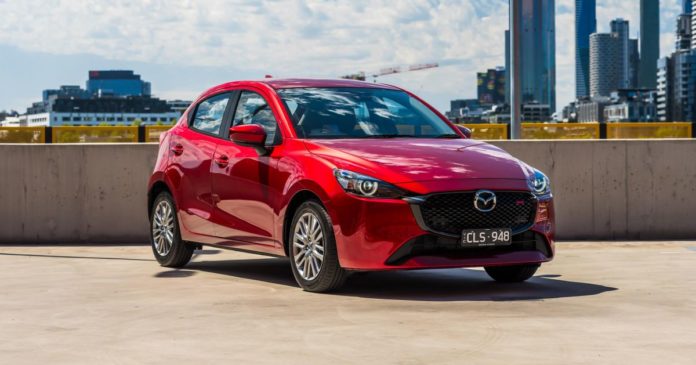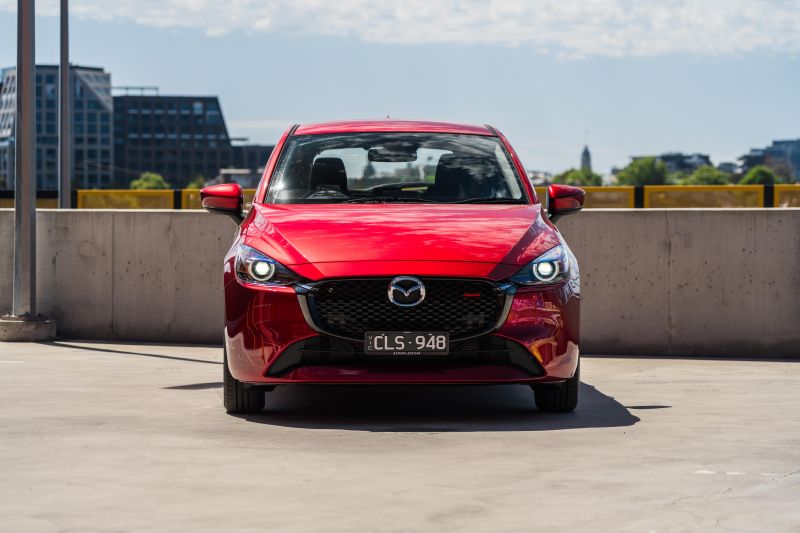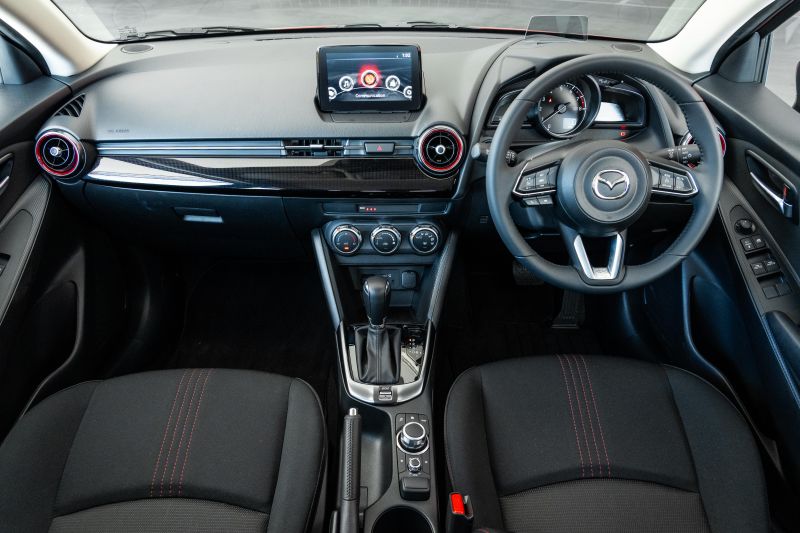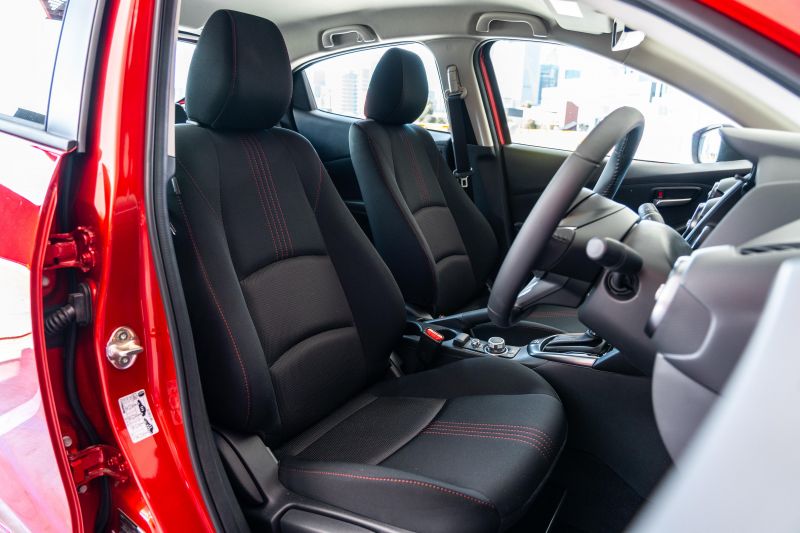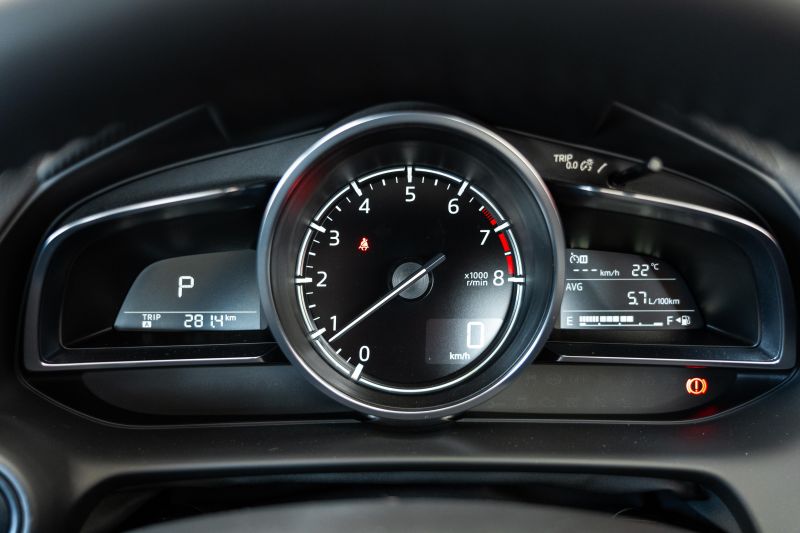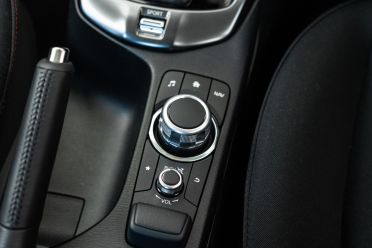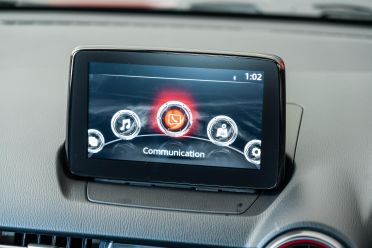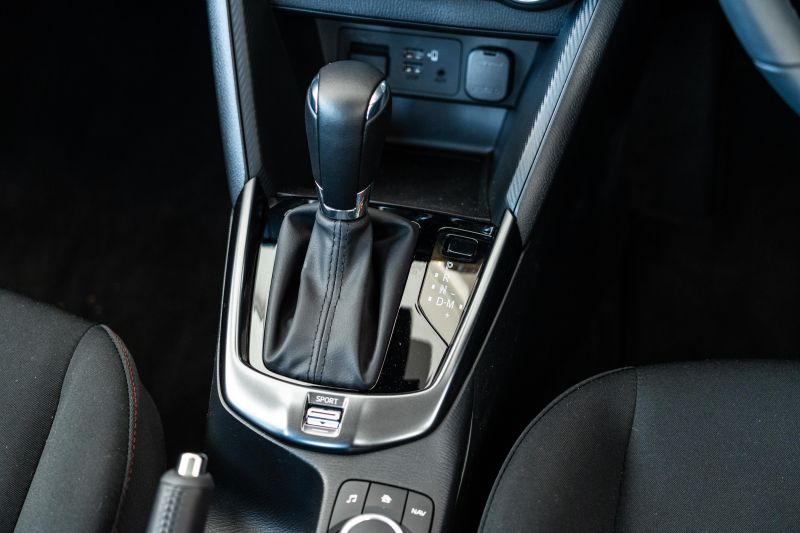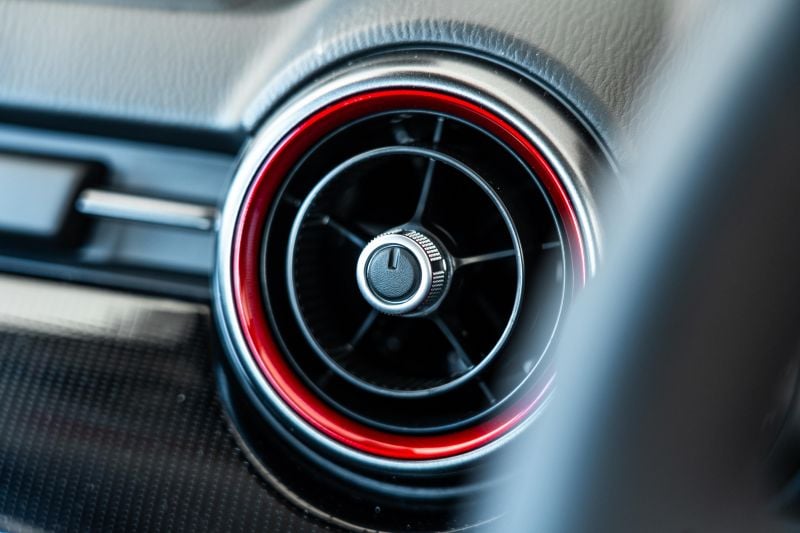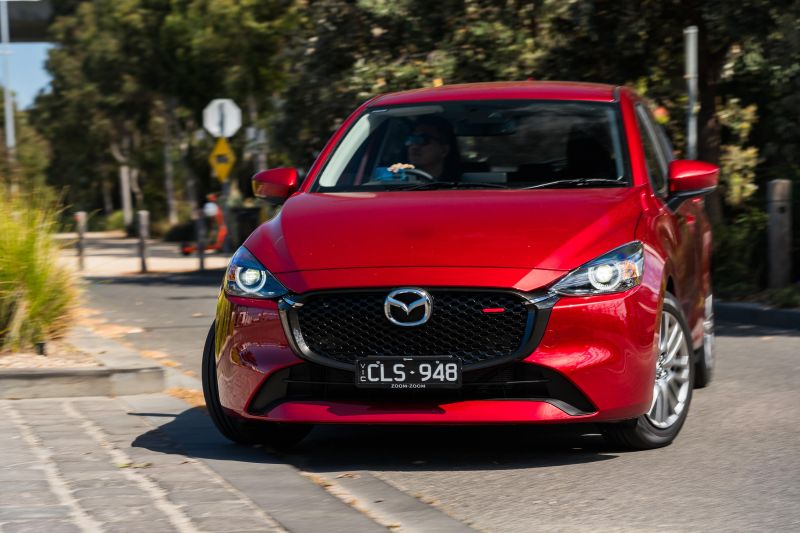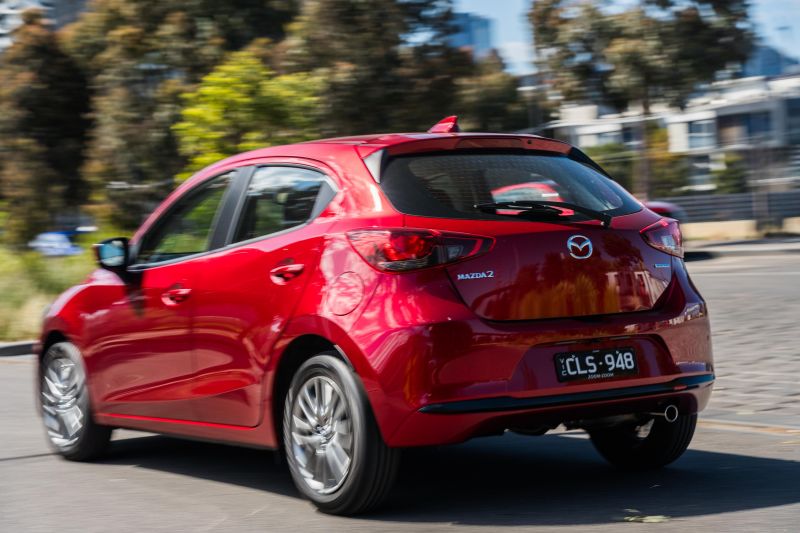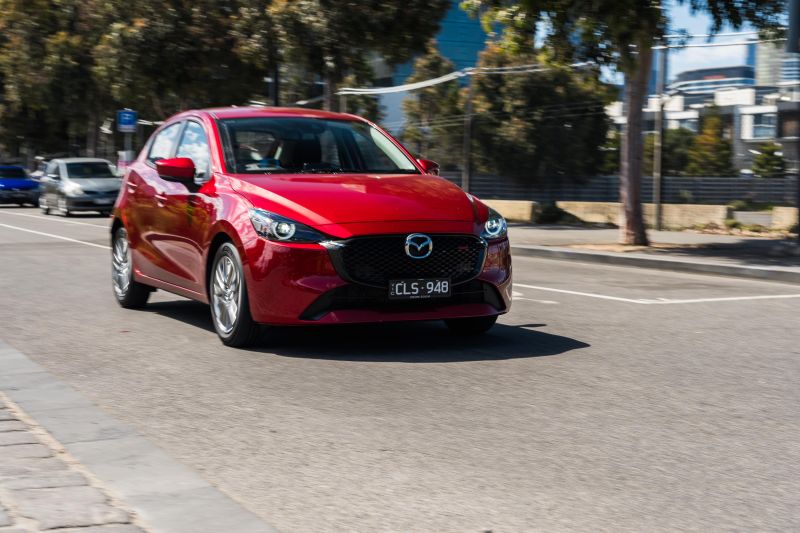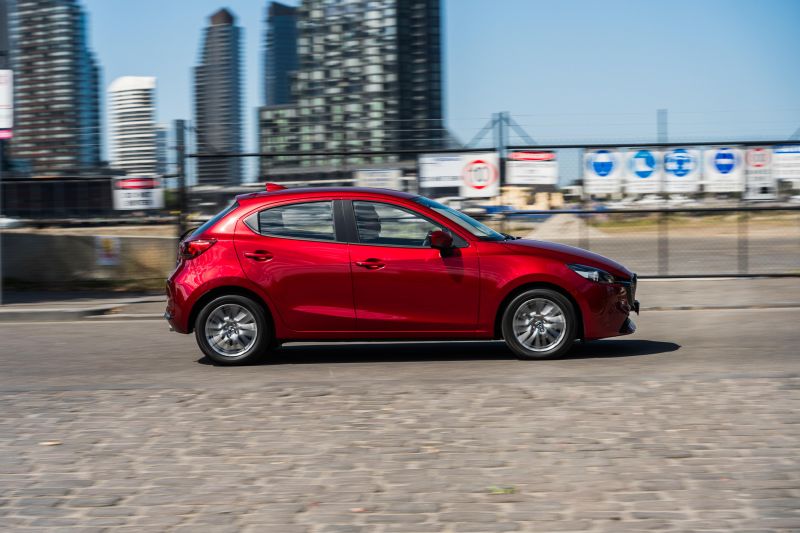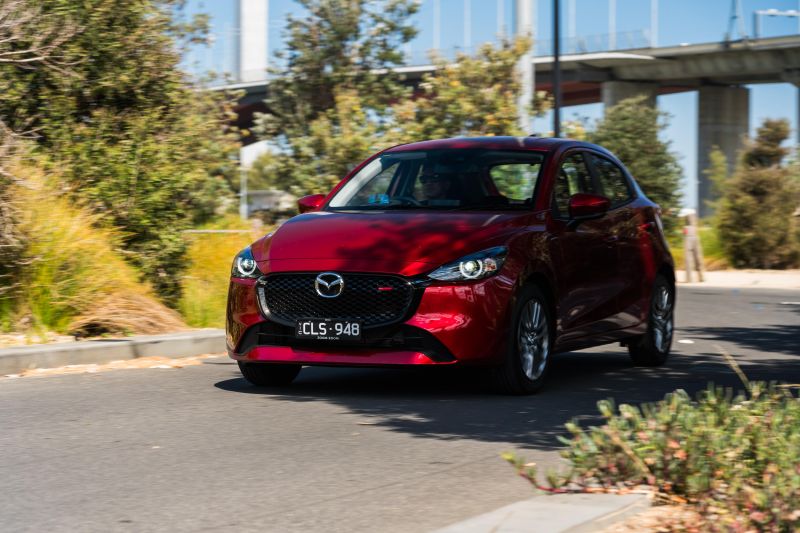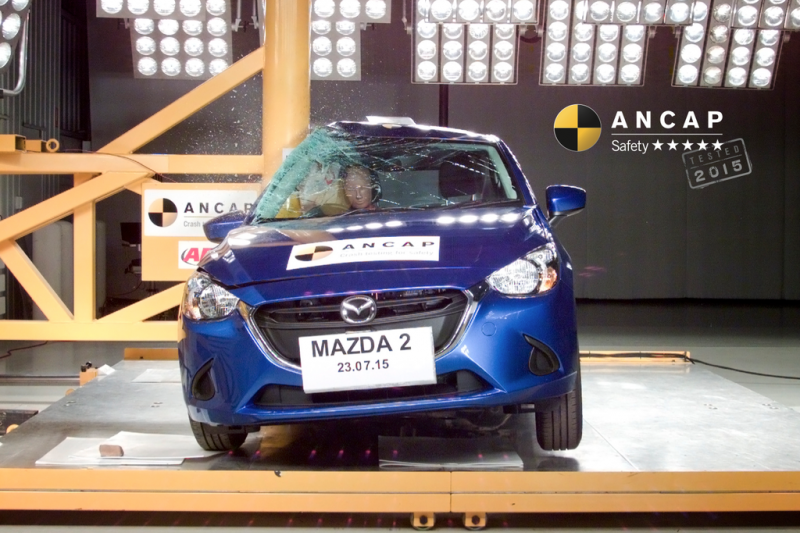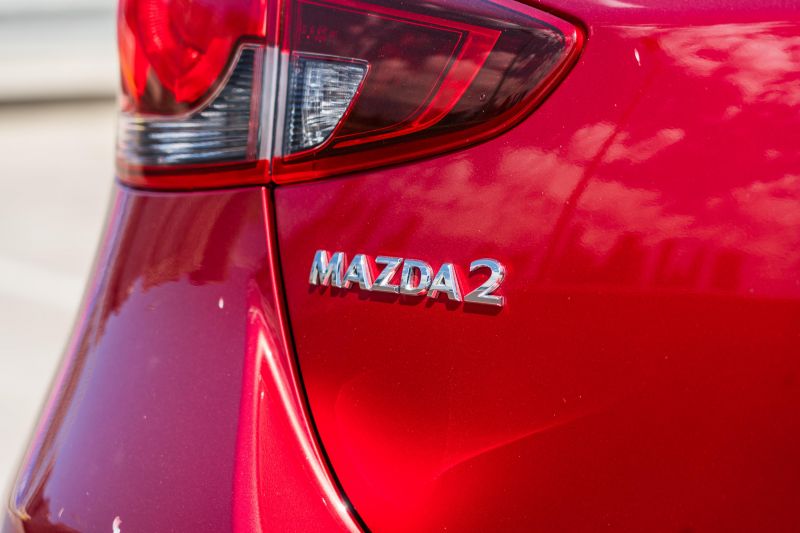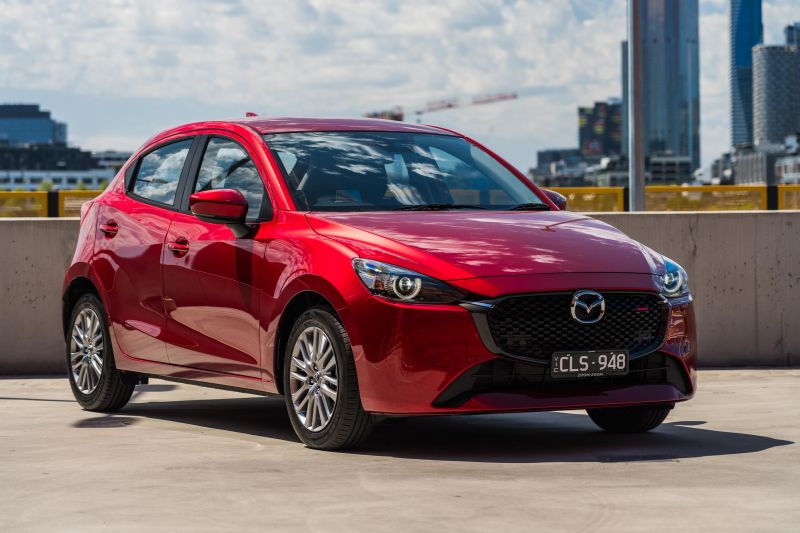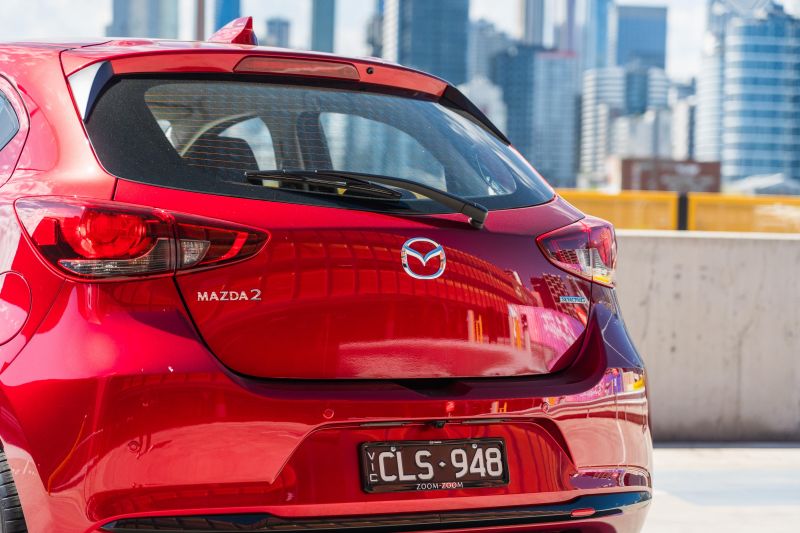The Mazda 2 hasn’t been a new kid on the block for a fair while now, but its latest facelift is yet another attempt to breathe some life into the company’s entry-level vehicle.
The current, third-generation model dates back to 2014, making it one of Mazda’s oldest models in its lineup. The Mazda 2 received its first facelift in 2019 and then yet another last year.
Highlights of this update include a redesigned front and rear bumpers, a revised front grille with a coloured accent on certain variants, tweaked interior finishes, as well as wireless Apple CarPlay across the entire range.
We’ve sampled a wide range of Mazda 2 variants to date but on test here is the almost flagship G15 Evolve hatchback. Does it form as the sweet spot of the range? Read along to find out.
How does the Mazda 2 compare?
View a detailed breakdown of the Mazda 2 against similarly sized vehicles.

Mazda
Mazda 2
How much does the Mazda 2 cost?
Mazda recently upped pricing of the updated Mazda 2 by $150. They previously rose in October last year by $310.
2024 Mazda 2 pricing
- 2024 Mazda 2 G15 Pure manual hatch: $22,870
- 2024 Mazda 2 G15 Pure automatic hatch: $24,870
- 2024 Mazda 2 G15 Pure automatic sedan: $24,870
- 2024 Mazda 2 G15 Pure SP hatch: $25,670
- 2024 Mazda 2 G15 Evolve hatch: $26,370
- 2024 Mazda 2 G15 GT hatch: $28,070
- 2024 Mazda 2 G15 GT hatch: $28,070
Prices exclude on-road costs
To see how the Mazda 2 compares with its rivals, use our comparison tool.
What is the Mazda 2 like on the inside?
Hopping into the Mazda 2 is made easy as the seat is much closer to hip height than the sleeker Mazda 3. It’s not quite as level to your hip as the higher-riding CX-3 crossover, but you don’t feel like you’re stepping down too far.
Once you’re in you’re presented with a set of seats that are finished in black fabric upholstery with red trim accents. The seat design itself is rather inoffensive though the addition of the red highlights make it look a little sporty.
Both the front seats are manually adjustable, which is to be expected in this kind of vehicle, but they still offer enough adjustability to accomodate shorter to taller people. Disappointingly however, there’s no adjustable lumbar support.
The driver’s seat itself is soft and squishy enough that you feel comfortable on longer trips. There’s also enough side bolstering so you feel secured when going around corners.
Ahead of the driver is where the Mazda 2 starts to show its age. The leather-wrapped steering wheel has a thin rim and feels nice in the hand, though the buttons on it are the older style.
Pressing up and down on the steering wheel buttons provides a clicky feedback, however pressing them in feels mushy and inaccurate.
The indicator and wiper stalks behind the steering wheel are stubby and thick but still have a satisfying thwack when you use them.
Behind the steering wheel is a set of gauges that look incredibly dated. In the centre is a large analogue rev counter with a small digital speedometer readout in the bottom right.
There are also two small basic digital screens flanking this central rev counter. The left-hand screen displays the odometer as well as the selected gear, whereas the right-hand screen can be configured to display bits of information like the average fuel economy.
There’s a notable absence of an engine temperature gauge, which isn’t the end of the world as there are lights for when the engine is cold or too hot.
Above the instrument cluster is a flip-up head-up display that projects a small amount of information onto a plastic polariser. I found it really hard to find a perfect position as it was either too low or too high depending on how I sat in the seat.
Moving across is a now extremely dated 8.0-inch MZD Connect infotainment system which is technically a touchscreen but only when you’re stationary or using smartphone mirroring.
The display resolution isn’t the clearest and the processing power appears to be lacking. This means when you start the car up or open a new program it takes a considerable amount of time for the infotainment system to respond.
When you can’t use the touch inputs on the infotainment system you’re forced to use an older-style control panel which includes a rotary dial. Using the latter can a little painful at first but you soon get used to how it works.
All Mazda 2 variants now come with wireless Apple CarPlay which is handy as you can leave your phone in your pocket and don’t need to mess around with a USB cable. It’s worth noting Android Auto continues to be only offered in wired form.
On the flipside however, no Mazda 2 variant comes with a wireless charger which means your phone battery will die quicker. This is fine on shorter trips, but on longer ones I tended to plug in my phone so its battery would stay topped up.
It takes a fair while for smartphone mirroring to load up on the touchscreen when you first start up the car which is painful if you need to put in a navigation destination quickly.
Speaking of navigation, the Mazda 2 G15 Evolve comes as standard with satellite navigation which looks really dated. It’s also a pain to use as scrolling with the rotary dial to type in a point of interest takes forever. It’s so much easier and quicker to use Google maps on my phone with smartphone mirroring.
Moving down there are a set of round dials for the climate control system. It’s nice to have physical dials for these, however the leftmost knob is for the temperature and it’s hard to tell what it’s set at exactly.
Looking around the cabin there are a couple of soft touches in high touch-point areas, but the majority of the finishes are generally harder plastics. This is pretty common for the segment however.
The Mazda 2 G15 Evolve uniquely receives red highlights around the cabin, including on the rings of the air vents.
There’s also a glossy piano black dashboard finish that got very grubby and dusty after my week of testing. It was also scratched from previous cleaning attempts.
Disappointingly there’s no centre armrest in the Mazda 2 which instead there are two cupholders and a manual handbrake lever.
Moving to the second row I was surprised with how much space there is given the diminutive exterior dimensions. At a leggy 182cm tall I had adequate head and toe room, though I did have to splay my legs around the seat in front.
An adult or two will be okay in the second row for short trips, though things start to get cramped very quickly. Kids will be fine but they don’t have very amenities at their disposal.
The Mazda 2 G15 Evolve doesn’t have any rear air vents, USB ports, or even a fold-down centre armrest. It’s a rather grim place to be, though outward visibility is pretty good.
At the rear there’s a manually opening tailgate which is common for this type of vehicle. It’s actually really light which means opening and closing it is a breeze.
Once the tailgate is open there’s a surprising amount of space. The boot is a rather squared-off and deep area which will hold more bags that you’d first anticipate. Mazda quotes an official boot capacity figure of 250L in the hatchback.
You’re able to fold the rear seats with a 60/40 split which does open up more boot space, though the loading floor isn’t flat. Mazda doesn’t quote an official boot capacity figure with the rear seats folded down.
Like the back seats there aren’t many amenities in the boot apart from a small light that needs to be turned on manually every time you open the boot.
Under the boot floor there’s thankfully a space-saver spare wheel which is better to have rather than a tyre inflation kit or nothing at all. It especially comes in handy if you plan to take the car away from civilisation and nearby tyre repair shops.
What’s under the bonnet?
The facelifted Mazda 2 with the automatic transmission has lost 1kW of power and 2Nm of torque. The manual G15 Pure’s outputs are unchanged.
| Model | Mazda 2 G15 |
|---|---|
| Engine | 1.5L naturally aspirated 4cyl petrol |
| Power | 81kW |
| Engine torque | 142Nm |
| Transmission | 6-speed auto |
| Driven wheels | Front-wheel drive |
| Weight | 1109kg (kerb) |
| Fuel economy (claim) | 5.0L/100km |
| Fuel economy (observed) | 5.8L/100km (320km mixed driving) |
| Fuel tank size | 44 litres |
| Fuel requirement | 91 RON |
To see how the Mazda 2 compares with its rivals, use our comparison tool.
How does the Mazda 2 drive?
Walking up the to the Mazda 2 you’re forced to take the key out of your pocket because it doesn’t have proximity entry. You need to opt for the flagship G15 GT if you want this feature.
Once you’re in however, there’s a push-button start which infuriates me because you then have to find somewhere to slot the key. I’d much rather just be able to keep it in my pocket all the time.
When the Mazda 2’s engine initially turns on you get a harsh idle with high revs. This is pretty common for Mazda vehicles and you eventually grow to love it.
After the engine has warmed up a tad or you select a gear the revs drop down to a more respectable figure. Then you’re on your way.
The 1.5-litre naturally aspirated four-cylinder petrol engine in the Mazda 2 only has enough power to get around sufficiently but nothing more. With outputs of 81kW of power and 142Nm of torque, it’s completely adequate and in line with the segment.
The six-speed automatic transmission is a smooth-shifting unit that tries to make the most out the engine’s mediocre outputs. Despite this there’s a lack of low-down torque which means from a standstill it will rev out first and second gear all the way to 3000rpm in typical driving.
Don’t be expecting to win any informal traffic light race in the Mazda 2. The firmer you press the accelerator the more it revs and shouts, but you won’t be going any quicker.
Despite this the Mazda 2 feels extremely nimble and dynamic in and around the city. It feels very chuckable in the corners and almost has an MX-5 feeling about it.
The small hatch is super easy park due to its tight turning circle. As standard there’s a reversing camera with poor picture quality, as well as rear parking sensors.
There are also no major blind spots in the Mazda 2 which is nice and surprisingly uncommon as more vehicles adopt more steeply raked rooflines that block rearward visibility.
The suspension and ride quality around town is really compliant, though over certain harsher bumps the rear can slap a tad. It’s obvious the Mazda 2 was designed with the city front of mind.
Building up speed in the Mazda 2 does take some work. Once you accelerate past 60km/h things slow down and you need to be patient. You’ll eventually get to your intended to cruising speed but the engine will get a bit noisy in the meantime.
On the highway the Mazda 2 really doesn’t feel like a small car which is really confidence inspiring. It’s super planted and doesn’t feel like it’s going to get blown away like some of its rivals can feel like.
The transmission is eager to drop back to fifth gear when you’re cruising at 100-110km/h to maintain the speed, though steeper hills will see it drop back to fourth gear. The revs are really high at this point and the engine note isn’t particularly amazing.
There’s also a few bit of road and tyre noise booming through the cabin, especially on coarse-chip bitumen roads which are very common in Australia. This is primarily due to the lack of sound insulation in the Mazda 2.
Like all current Mazda vehicles the driver’s side mirror is magnified which really frustrates me because you can’t properly see if there’s a car in your blind-spot. Thankfully there is blind-spot monitoring as standard across the entire Mazda 2 range.
On the safety front, the Mazda 2’s lane departure warning can be a little too sensitive in its default setting. Thankfully it only vibrates the steering wheel and plays a small chime. You are able to dial down its sensitivity but it’s still a little too overactive on winding narrow roads.
There’s also no adaptive cruise available in the G15 Evolve variant as tested here. You need to step up to the flagship G15 GT to receive this feature.
This isn’t the end of the world however as using regular cruise control I was reminded how user-friendly it is. Sure you need to disengage the system when you’re approaching a slower car, but it also won’t slam on the brakes when someone merges ahead of you on the freeway.
Lastly I want to note the Mazda 2’s LED headlights are fantastic. Better yet, they’re standard across the entire range. These types of headlights are really bright and are ideal for driving at night along dark rural and regional roads where you need to be hyper-vigilant of whether animals with rush out onto the road.
What do you get?
The Mazda 2 is available in four trim levels – on test here is the almost flagship G15 Evolve Hatch.
Mazda 2 G15 Pure highlights:
- 15-inch alloy wheels
- Power-folding exterior mirrors
- LED headlights
- Automatic headlights
- Rain-sensing wipers
- 7.0-inch infotainment screen
- Wireless Apple CarPlay
- Wired Android Auto
- DAB+ digital radio
- Leather-wrapped steering wheel
- Leather-wrapped shifter and handbrake
- Tilt and telescopic steering wheel adjustment
- 6-speaker sound system
- Keyless start
- Air-conditioning
- Power windows
- 1 x 12V outlet
- 2 x USB outlet
G15 Pure SP adds:
- 16-inch black-finish alloy wheels
- Carbon fibre-style roof
- Shark fin antenna
- Chrome exhaust extension
- Black exterior mirrors
G15 Evolve adds:
- 16-inch alloy wheels
- Black mesh-style grille
- LED daytime running lights
- Climate control air-conditioning
- Auto-dimming rear-view mirror
- Colour head-up display
- Satellite navigation
- Red stitching details
- Traffic sign recognition
Is the Mazda 2 safe?
The Mazda 2 had a five-star rating from ANCAP, but as this was based on testing conducted in 2015 it has now expired.
All models come standard with the following equipment:
- Autonomous emergency braking (forward, reverse)
- Blind-spot monitoring
- Lane keep assist
- Rear cross-traffic alert
- Rear parking sensors
- Reversing camera
G15 Evolve and above get traffic sign recognition, while the G15 GT gains a surround-view camera, front parking sensors, and adaptive cruise control.
How much does the Mazda 2 cost to run?
The Mazda 2 is backed by a five-year, unlimited-kilometre warranty.
Servicing is required every 12 months or 15,000km, with the first five services capped at $334, $526, $396, $526 and $334.
CarExpert’s Take on the Mazda 2
The Mazda 2 makes perfect sense for someone looking at either a first or last car.
It’s compact yet surprisingly roomy inside, offers smile-inducing city driving dynamics, and is one of the few vehicles in its segment to still offer the option of a manual transmission.
The latter of these doesn’t apply to the almost flagship G15 Evolve on test here however as it’s only available with a smooth-shifting six-speed automatic transmission. You can only get the manual transmission in the entry-level G15 Pure hatch.
Mazda has slowly but surely continued to up the pricing of the 2 to a point where it no longer seems to be a value proposition. Thankfully there’s a good amount of standard features and safety kit, but the Mazda 2 G15 Evolve is now over $30,000 drive-away.
With this in mind it’s hard to recommend the almost flagship Mazda 2 G15 Evolve as the sweet spot of the range. If you’re after getting the biggest bang for your buck, opt for the entry-level G15 Pure.
If you want all the available safety equipment on the other hand you’re forced to opt for the flagship G15 GT which is $1700 more expensive the G15 Evolve.
Click the images for the full gallery
MORE: Buy a Mazda 2
MORE: Everything Mazda 2

